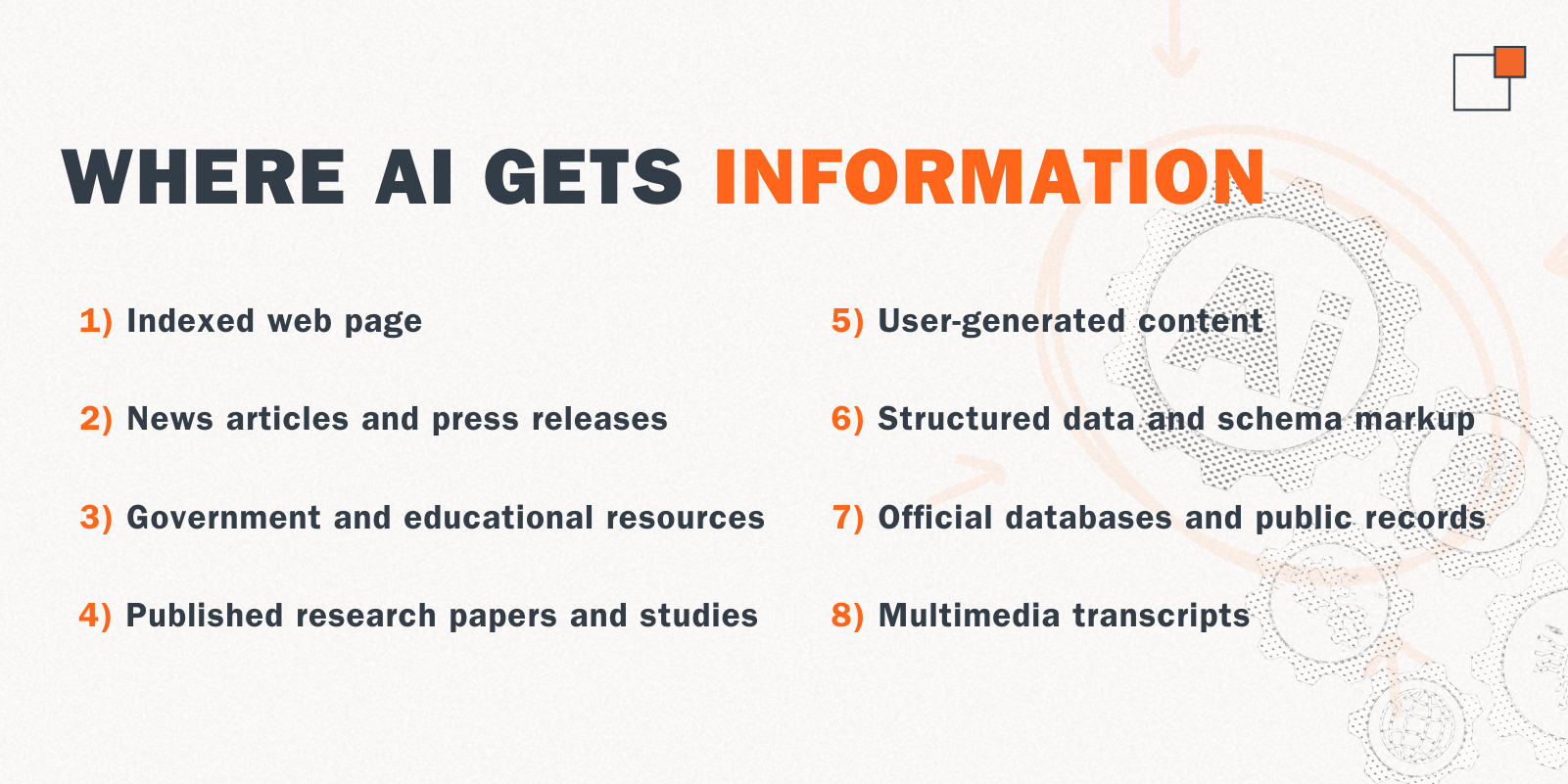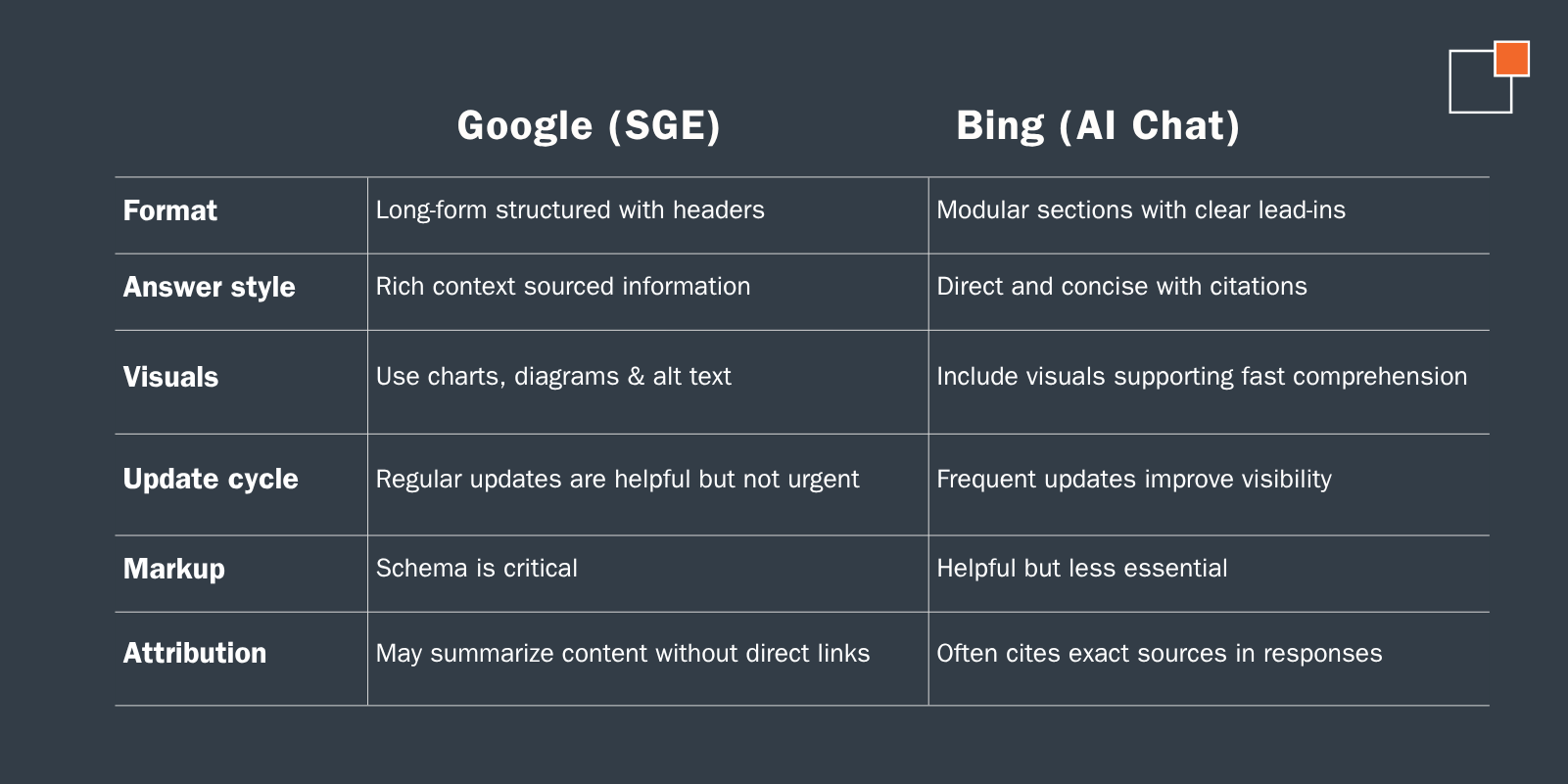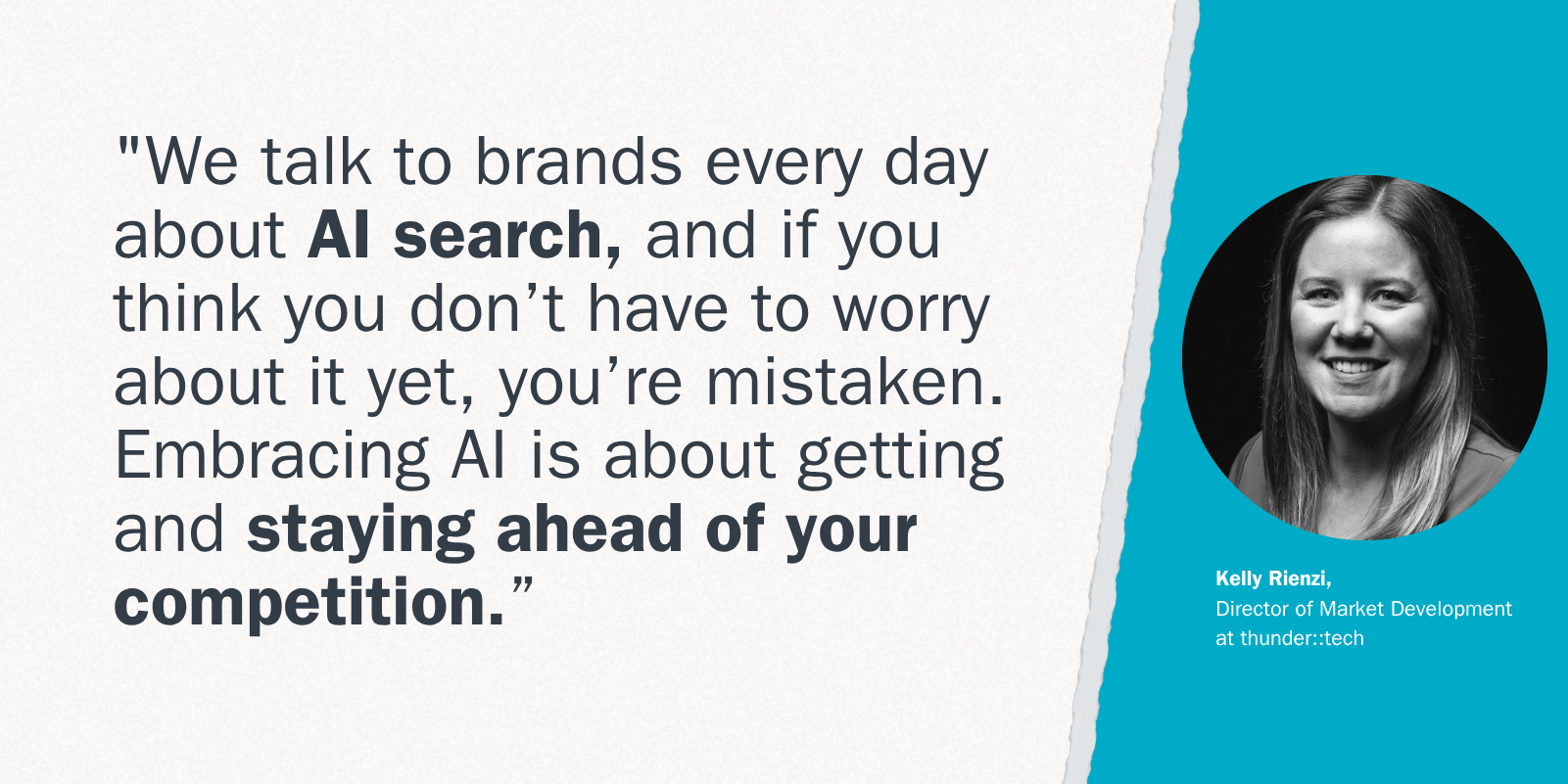Optimize Your Content for AI Search
Bing vs. Google Strategies Explained
AI is changing how people search online and your content strategy needs to keep up. Bing and Google are both integrating AI into search results but in different ways, affecting how and where your content appears. If you want your brand to stay visible, you’ll need to adjust how you write, structure and publish your content to meet the expectations of each platform.
At thunder::tech, we’ve been immersed in AI for years, keeping up with how it’s reshaping search behavior and what it means for brands competing for attention. Keep scrolling to see the key differences between Bing and Google’s AI search tools, as well as practical ways to optimize content for both.
Where AI gets its information and why structure matters
AI-powered search engines like Bing and Google don’t guess answers—they scan millions of webpages, documents and databases, relying on well-organized, accessible information they can quickly process and evaluate.

Some of the specific sources AI draws from include:
-
Indexed web pages across trusted sites like Forbes, Moz and industry-leading blogs
-
News articles and press releases from publishers such as Reuters, The New York Times and PR Newswire
-
Government and educational resources such as data.gov, NIH.gov or university research portals
-
Published research papers and studies from platforms like PubMed, Google Scholar or IEEE Xplore
-
User-generated content such as answers on Quora, Stack Exchange and discussions in active, reputable Reddit communities (subreddits) where experts and enthusiasts share detailed insights
-
Structured data and schema markup embedded on sites like Amazon product pages or recipe sites like Allrecipes
-
Official databases and public records like SEC filings or census data available on government websites
-
Multimedia transcripts such as YouTube video captions or podcast transcripts from Spotify and Apple Podcasts
The clearer your content is, both in language and structure, the easier it is for AI to identify key points, pull quotes and cite your page as a trusted source.
That’s why formatting your content with headers, bullet points and schema markup isn’t just for human readers—it’s crucial for AI comprehension. Without clear signals, AI might overlook your content or misinterpret it, reducing the chance you’ll be featured in AI-generated answers.
Optimizing for AI means thinking about how machines read your content, not just humans. By providing concise answers upfront, breaking ideas into digestible chunks and adding structured data, you make your brand’s content a prime candidate to be pulled into AI-powered search features. This can improve your visibility dramatically, especially on platforms like Bing’s AI chat that directly link sources.
How Bing and Google use AI differently
Before jumping into tactics, it’s important to understand how each search engine uses AI to surface content.

Google: context first, answers second
Google’s AI-enhanced search experience, Search Generative Experience (SGE), focuses on giving users quick, informative summaries before they even click a link. These AI-generated blurbs appear at the top of the results page, blending with traditional search listings.
Google puts a heavy emphasis on credibility. It evaluates content using signals like experience, authority and trust which means it favors well-structured, in-depth content from reputable sources. It’s also selective with what it features in AI answers, often pulling from pages using structured data or schema markup. You can learn more about this shift in our breakdown of AI Search and SEO.
Bing: fast answers, real-time sources
Bing’s integration of AI through its Chat experience is more conversational and aggressive in how it pulls in content. It presents answers in a dialogue format, often citing multiple sources within the same response. This approach gives users a faster, more direct response without requiring much scrolling or clicking.
Bing is more likely to feature up-to-date content, clearly written and easy to parse. It also tends to surface results from timely blog posts and articles addressing specific questions in a straightforward way.
Key differences to keep in mind
-
Source attribution: Bing tends to link back to specific content more reliably than Google’s AI summaries
-
Formatting needs: Google looks for structured content that fits into its knowledge graph; Bing favors content broken into scannable, modular sections
-
Content freshness: Bing seems to prioritize more recent updates while Google is slower to surface newly published material
-
User interaction: Bing invites a conversation while Google offers quick takeaways layered into traditional results
What to focus on when optimizing for AI search
Now that we’ve covered how the platforms differ, let’s talk about what you can actually do to create content that performs well in both environments.
Use more natural language queries
Both Bing and Google are built to understand full questions. Instead of optimizing around keywords like “best CRM,” aim for phrases like “what is the best CRM for nonprofits” or “how to choose the right CRM for a midsized business.” These longer question-style queries align with how people actually use AI in search.
Start with tools like “People Also Ask” in Google or forums like Reddit and Quora to find how real users phrase their questions. Building content around those natural questions makes it easier for AI to identify your content as a relevant source.
Lead with clear answers
Burying your main point halfway down the page doesn’t work when AI is looking to extract concise information. Start each major section or article with a brief, direct answer to the core question then use the rest of the content to provide context and supporting detail.
This approach helps your content get picked up in AI summaries and also keeps human readers engaged.
Prioritize structure
Clear site formatting is essential, so use subheadings to separate ideas, break content into short paragraphs and include bullet points or numbered lists wherever appropriate. Tables, charts and side-by-side comparisons are also helpful. These formats make your content easier for AI tools to scan and quote accurately.
Need help thinking through website layout and structure? Our team breaks down everything you need to know here.
Add schema markup
Structured data helps AI identify the purpose and structure of your content. If you have FAQs, tutorials or product comparisons, use appropriate schema markup to help search engines display that content in enhanced formats.
While this won’t guarantee you’ll be featured in AI responses, it increases the likelihood your content will be considered for those top-level placements.
Support your claims
AI tools are getting better at evaluating credibility. Link to reputable sources, use up-to-date statistics and include insights from real subject matter experts. This is especially important for Google, which leans heavily on E-E-A-T factors (experience, expertise, authoritativeness, trustworthiness).
Google uses E-E-A-T to determine whether content is reliable and worth showing to users, especially in sensitive categories like health, finance or legal topics. But it’s also applied more broadly; for example, blog posts written by people with hands-on experience tend to perform better than generic overviews. Likewise, content that demonstrates expertise—backed by real credentials or first-hand insights—can earn more visibility in AI summaries and traditional search results. Trust is the foundation of all of it, and that comes from a combination of transparency, accuracy and consistent quality.
Even better: add your own data or case studies when possible. Unique insights give AI a reason to prioritize your content over more generic competitors.
Tailoring content for Bing and Google
Both platforms reward well-crafted content but the way you package it matters. Here's how to align your work with each one:

To cover your bases, combine both approaches: lead with clear answers, follow with deep content and format everything in a way machines and humans can easily understand.
Measuring success in AI-driven search
You can’t improve what you don’t measure. Here are a few ways to track how your AI-optimized content performs:
Key metrics
-
Search visibility: Monitor impressions in Google Search Console and Bing Webmaster Tools
-
Click-through rates: See if featured or AI-influenced content gets more engagement
-
On-page performance: Review bounce rate, scroll depth and time on page for high-priority content
-
Citation tracking: Look for signs your content is being quoted or sourced in AI responses
-
Content freshness: Use internal dashboards to flag when pages need updates
Keep in mind many AI-related metrics are still evolving. Some third-party SEO tools are starting to track AI answer inclusion, but manual monitoring is still necessary.
Quick-start checklist for AI optimization
If you're ready to update your brand’s content but don’t know where to start, use this checklist to guide your process:
- Identify top-performing or high-potential content
- Research natural language questions related to each topic
- Rewrite intros to lead with short clear answers
- Add subheads, lists and structured sections
- Apply schema markup (FAQ, HowTo, etc.)
- Include credible sources and updated data
- Publish updates and review for clarity
- Track performance and iterate quarterly

Wrapping up
Google and Bing are introducing new expectations for what good content looks like and brands who can adapt will have a clear edge. The good news? You don’t have to throw out your entire content strategy. You just need to write with more intention, use formatting to help machines understand your message and stay focused on delivering value to the user.
If your brand could use help navigating AI-driven content optimization, thunder::tech is ready to step in. From audits and rewrites to full content strategies, we’ll help you stay ahead of what’s next in search.
Let’s make your content smarter, faster and ready for AI. Get in touch.

About the Author
Abi is the Director of Communications at thunder::tech, where she leads an integrated team specializing in performance marketing, advertising, social media, content and branding. Talk to her about pop culture and her personal grading system for coffee shops.